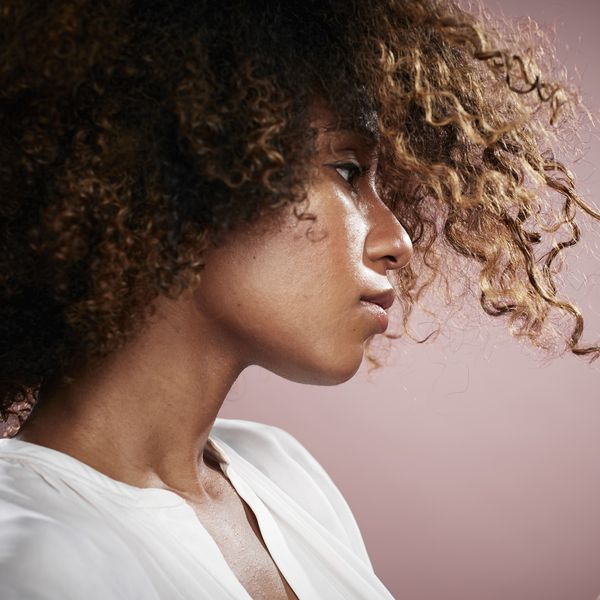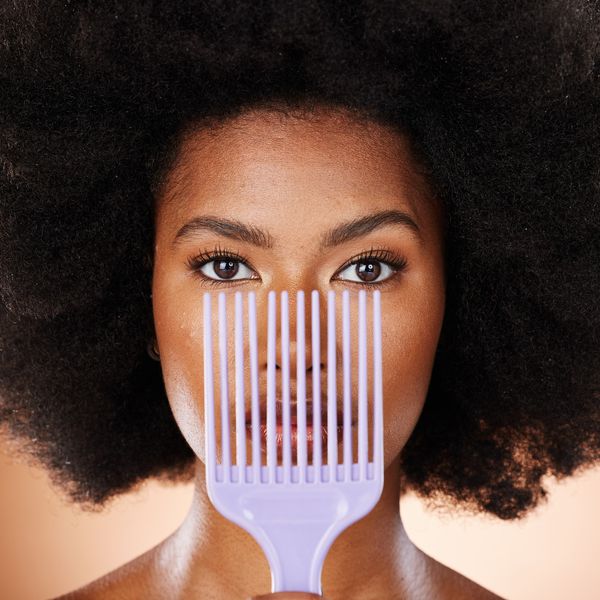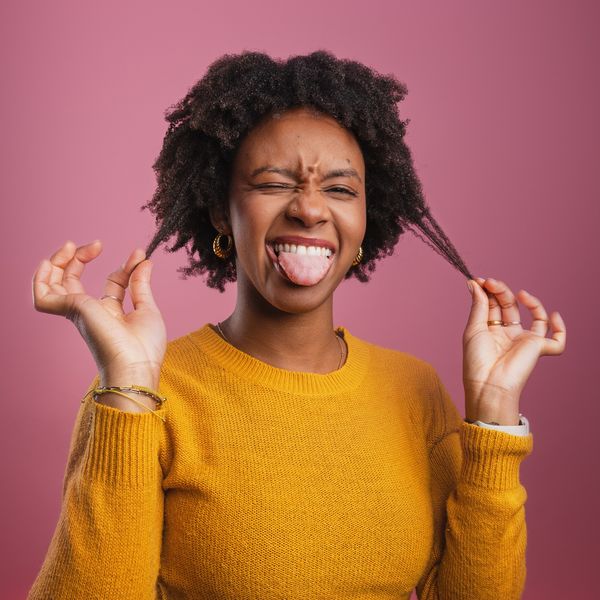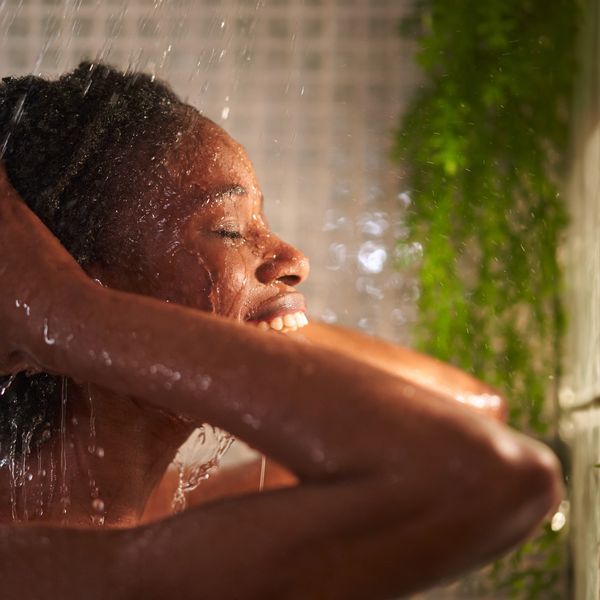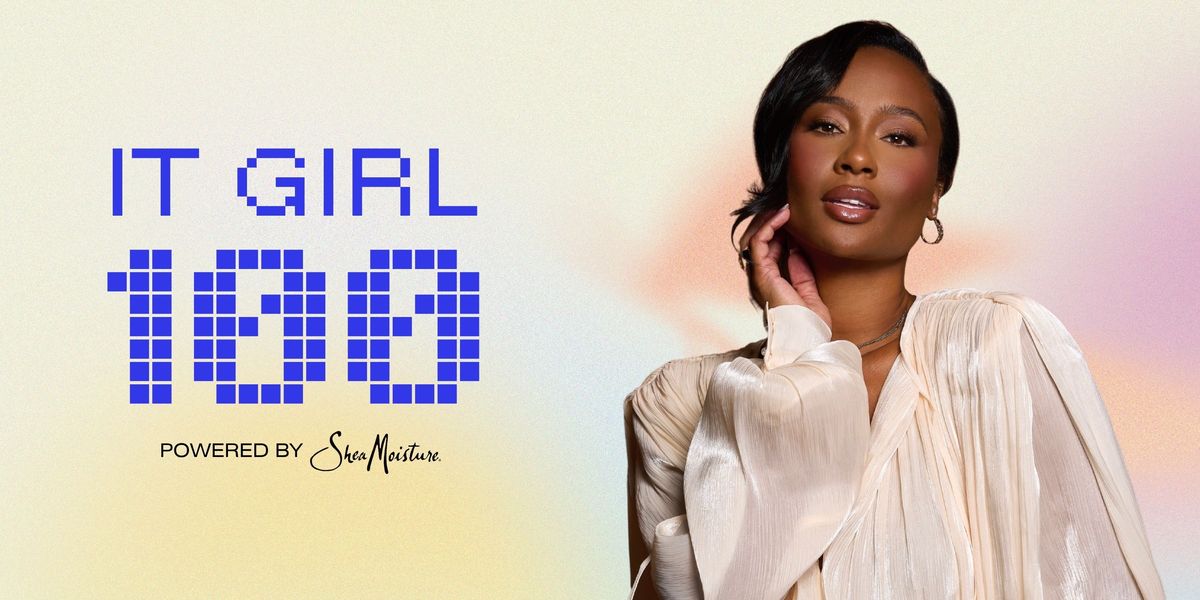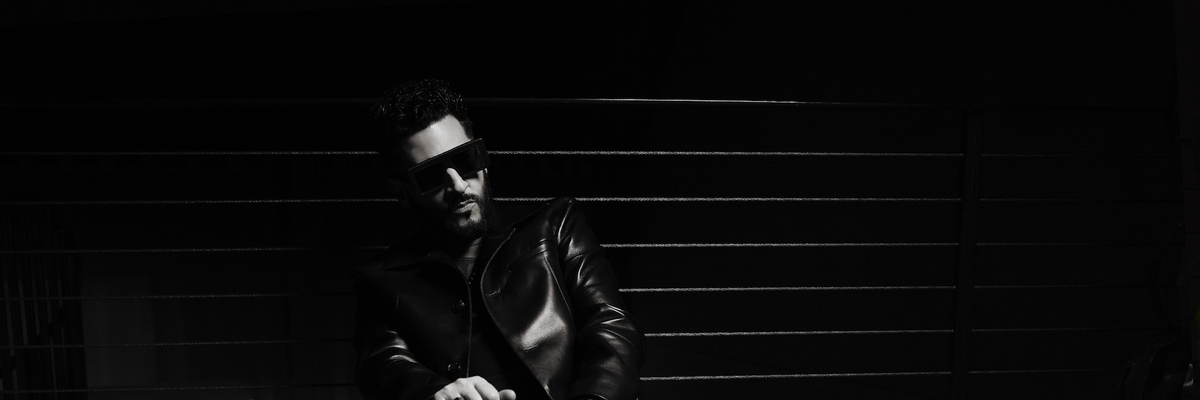Master Stylist Ashanti Lation Talks Success And Molding Normani's Iconic Ponytail
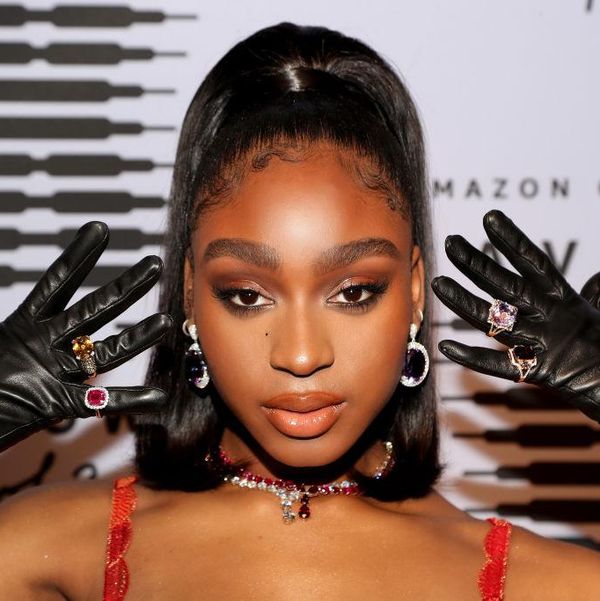
I have a love-hate relationship with the classic '90s ponytail. I love how versatile it is. It works for every hair type/texture and it fits every occasion from day to night. On the not-so-loving note: It's an addictive style and doing it too much can mean constant tension, eventually wreaking havoc on your roots and edges. If done right though, you can get the sleekness without the damage.
My forever high-ponytail inspo is our Queen Normani. She kills it every time. From the debut of her "Motivation" video to "Wild Side," it has become her aesthetic, and she's bodied every version of the '90s look since. So who better to get tips on creating a high ponytail from than one of her stylists, Ashanti Lation. The master stylist and CEO of VIP Luxury Hair Care sat down with xoNecole to tell us how she got started, her best tips for creating the perfect ponytail, and how to protect your hair while doing it.
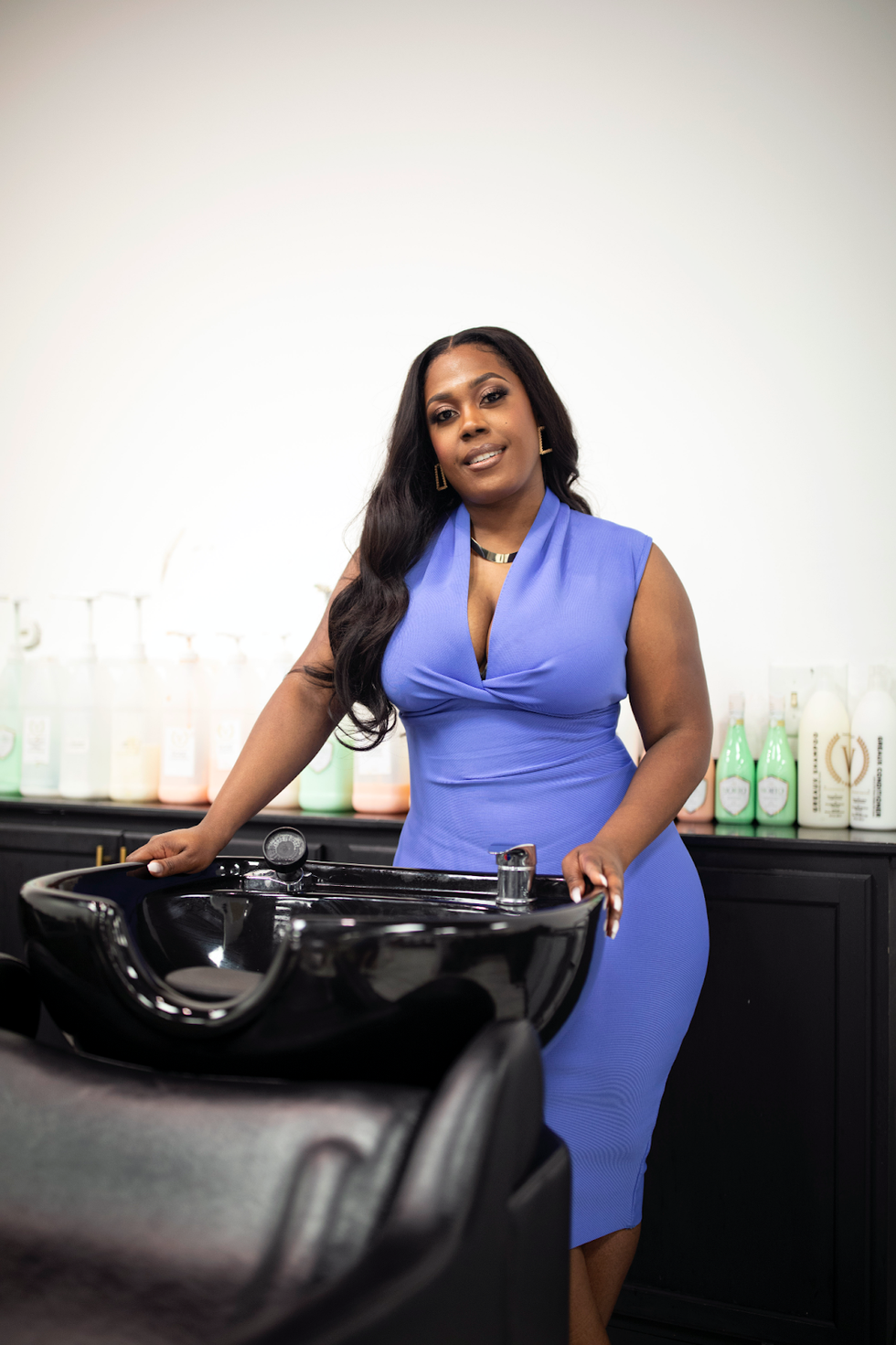
Darius Varnado
xoNecole: What inspired you to become a hairstylist? Where did you start?
Ashanti Lation: I started doing hair in high school because I wanted my hair done all the time. Then, I would try [styles] and it came out good to me, [so] a few other people would ask me to do their hair. About a week later, I started charging my neighbors and other high schools in my city. From that point on, I got popular.
I also have eczema and allergies so because of that the skincare aspect of doing hair was always important to me. I always focused on the hair [and scalp] because I was particular about what my clients used and didn't want it to affect my skin. If you know anyone with eczema, then you know if it breaks out on your hands or neck, it takes a long time to recover. In initially being cautious, my clients would have great results for their hair, and I followed that path with them. I started studying the skin [and] scalp and creating products.
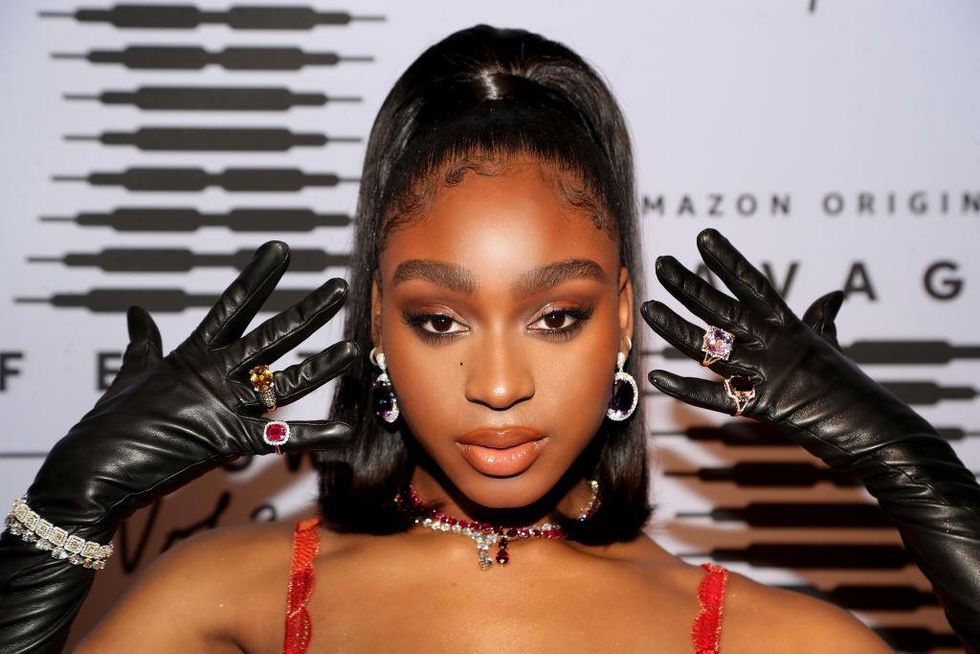
Jerritt Clark via Getty Images
When did you start working with Normani?
I'm the healthy hair guru, and a couple of celebrities and people in other industries have reached out to me asking for hair advice. She [had been] using our products [Greaux Drops] because a frontal had damaged her hair a little bit and the product was helping her hair grow back. She [contacted me] when she was in New Orleans and said, "Let's connect," and so we did and I did my thing. From that moment on, I've been her go-to haircare specialist.
When it comes to styling ponytails and keeping haircare in mind, what recommendations do you have to avoid damage?
It can be trying on the edges and at the top of your head from tension. Some people start to have bald spots at the top because the ponytails are very heavy, so I always tell people:
Avoid too much tension. Some people will make a section then swoop another section on top [to make it sleek and get it in a ponytail] it's too much. Try to get the hair as sleek as possible before you pull it up in a ponytail. So if you have to get a silk press first to smooth it out, then do that first. Prep the hair before you start the ponytail!
Use less product. Use holding spray first because sometimes using excessive gels, puddings, and wax, can become a lot, especially for the finer hair types. It will pull it out then thin it out.
Use the right band. Putting too many bands [on your hair] can damage the crown and cause balding. I like to use thick black rubber bands. Some people like scrunchies but I never try to unwrap them when taking them out. Just cut it out and throw it away! Don't try to keep using it because you'll get it tangled like that.
The base of the ponytail is important. Don't just use one rubber band. Use at least two and the wraps to create a structure like you're building something. It needs to be strong enough to support the hair. If you're doing one band, all that tension falls on your hair trying to hold the ponytail up. You can also do the ponytail on your thickest area so it will be less damaging to your hair.
Be gentle. Haircare is a slow dance, not a fast song.
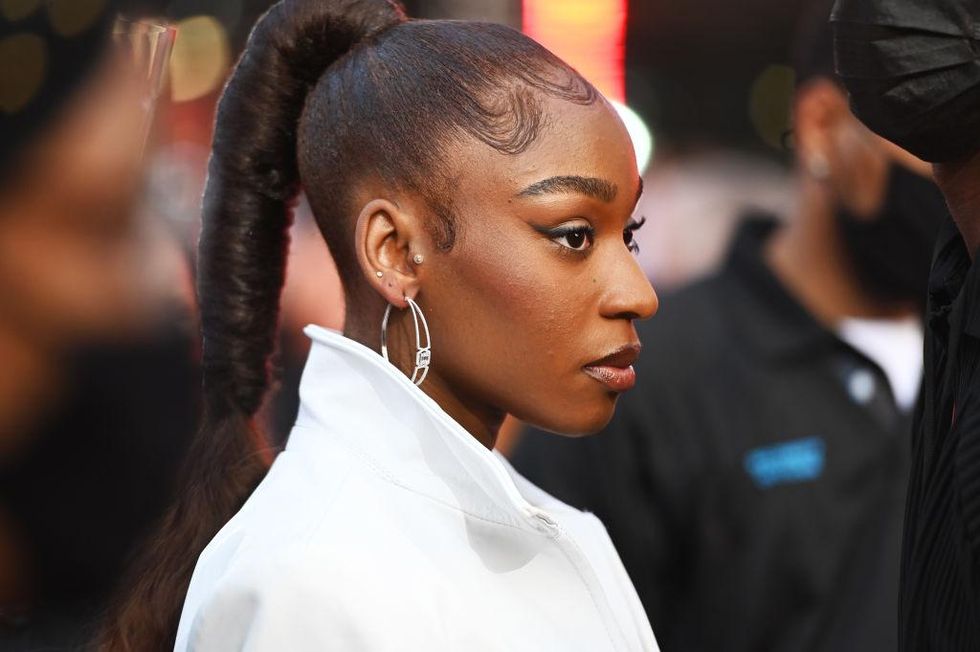
Noam Galai via Getty Images
What products are needed to achieve a Normani-inspired ponytail?
A pomade like Jam and an edge control like Elite Edge. You can use wax if you want but don't use gel. You'll need the hair of your choice. You can finish with a light-holding spray. You'll also need thick rubber bands and wrapping strips.
Can you walk us through your step-by-step process of creating a ponytail and prepping for it?
For a heat-free process, you'll need more product to sleek it because you're laying it down. For Normani's hair, we don't use any heat at all. We twist it and let it dry overnight. It will be sleek and you'd think we pressed it.
1. Make sure you smooth your ponytail out as much as you can before you put the product on it.
2. Use a pomade like Jam and add the Elite edge control on top of that and smooth it out with your hands.
3. Tie it up with the black hair wraps and let it settle until it's fully dry.
4. When you take it down it holds but it's still soft.
5. Use two bands and then start your top knot.
If you use heat and flat-iron it first, you can pretty much slick it up with a little serum and a holding spray to keep it in place.
What hair would you recommend? We know that some hair can be heavier than others.
There's human hair or braid hair. Try to weigh it out and see what feels better to you. It depends on your texture. Less is always more if you can get hair that's fuller. And avoid using too many bags of hair.
For more hair tips and product recommendations, follow Ashanti Lation on Instagram.
Featured image by Jerritt Clark via Getty Images
Exclusive: Viral It Girl Kayla Nicole Is Reclaiming The Mic—And The Narrative
It’s nice to have a podcast when you’re constantly trending online. One week after setting timelines ablaze on Halloween, Kayla Nicole released an episode of her Dear Media pop culture podcast, The Pre-Game, where she took listeners behind the scenes of her viral costume.
The 34-year-old had been torn between dressing up as Beyoncé or Toni Braxton, she says in the episode. She couldn’t decide which version of Bey she’d be, though. Two days before the holiday, she locked in her choice, filming a short recreation of Braxton’s “He Wasn’t Man Enough for Me” music video that has since garnered nearly 6.5M views on TikTok.
Kayla Nicole says she wore a dress that was once worn by Braxton herself for the Halloween costume. “It’s not a secret Toni is more on the petite side. I’m obsessed with all 5’2” of her,” she tells xoNecole via email. “But I’m 5’10'' and not missing any meals, honey, so to my surprise, when I got the dress and it actually fit, I knew it was destiny.”
The episode was the perfect way for the multihyphenate to take control of her own narrative. By addressing the viral moment on her own platform, she was able to stir the conversation and keep the focus on her adoration for Braxton, an artist she says she grew up listening to and who still makes her most-played playlist every year. Elsewhere, she likely would’ve received questions about whether or not the costume was a subliminal aimed at her ex-boyfriend and his pop star fiancée. “I think that people will try to project their own narratives, right?” she said, hinting at this in the episode. “But, for me personally – I think it’s very important to say this in this moment – I’m not in the business of tearing other women down. I’m in the business of celebrating them.”
Kayla Nicole is among xoNecole’s It Girl 100 Class of 2025, powered by SheaMoisture, recognized in the Viral Voices category for her work in media and the trends she sets on our timelines, all while prioritizing her own mental and physical health. As she puts it: “Yes, I’m curating conversations on my podcast The Pre-Game, and cultivating community with my wellness brand Tribe Therepē.”
Despite being the frequent topic of conversation online, Kayla Nicole says she’s learning to take advantage of her growing social media platform without becoming consumed by it. “I refuse to let the internet consume me. It’s supposed to be a resource and tool for connection, so if it becomes anything beyond that I will log out,” she says.
On The Pre-Game, which launched earlier this year, she has positioned herself as listeners “homegirl.” “There’s definitely a delicate dance between being genuine and oversharing, and I’ve had to learn that the hard way. Now I share from a place of reflection, not reaction,” she says. “If it can help someone feel seen or less alone, I’ll talk about it within reason. But I’ve certainly learned to protect parts of my life that I cherish most. I share what serves connection but doesn’t cost me peace.
"I refuse to let the internet consume me. It’s supposed to be a resource and tool for connection, so if it becomes anything beyond that I will log out."
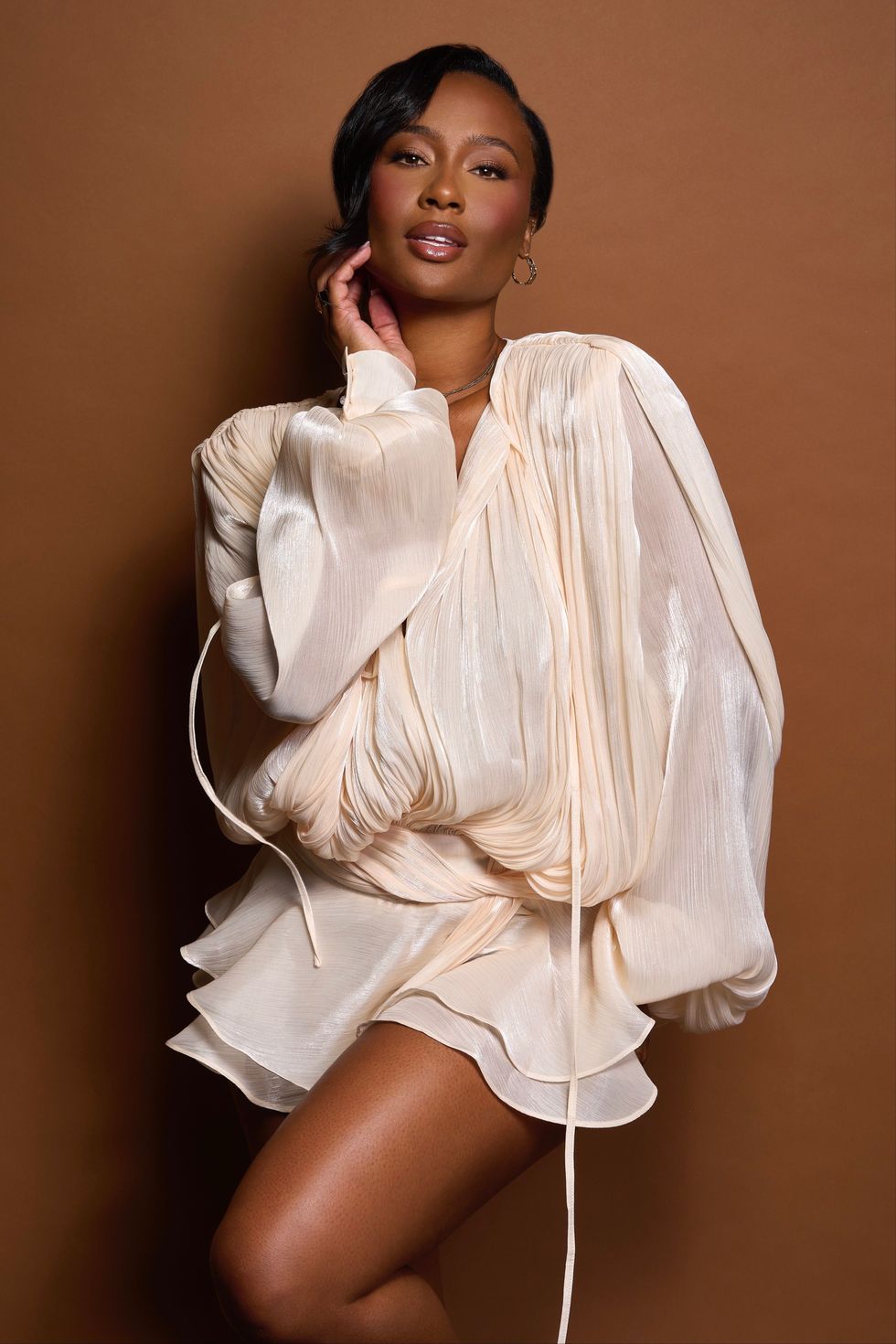
Credit: Malcolm Roberson
Throughout each episode, she sips a cocktail and addresses trending topics (even when they involve herself). It’s a platform the Pepperdine University alumnus has been preparing to have since she graduated with a degree in broadcast journalism, with a concentration in political science.
“I just knew I was going to end up on a local news network at the head anchor table, breaking high speed chases, and tossing it to the weather girl,” she says. Instead, she ended up working as an assistant at TMZ before covering sports as a freelance reporter. (She’s said she didn’t work for ESPN, despite previous reports saying otherwise.) The Pre-Game combines her love for pop culture and sports in a way that once felt inaccessible to her in traditional media.
She’s not just a podcaster, though. When she’s not behind the mic, taking acting classes or making her New York Fashion Week debut, Kayla Nicole is also busy elevating her wellness brand Tribe Therepē, where she shares her workouts and the workout equipment that helps her look chic while staying fit. She says the brand will add apparel to its line up in early 2026.
“Tribe Therepē has evolved into exactly what I have always envisioned. A community of women who care about being fit not just for the aesthetic, but for their mental and emotional well-being too. It’s grounded. It’s feminine. It’s strong,” she says. “And honestly, it's a reflection of where I am in my life right now. I feel so damn good - mentally, emotionally, and physically. And I am grateful to be in a space where I can pour that love and light back into the community that continues to pour into me.”
Tap into the full It Girl 100 Class of 2025 and meet all the women changing game this year and beyond. See the full list here.
Featured image by Malcolm Roberson
Jon B. Talks New Album, 18-Year Marriage & Being A Girl Dad
Since 1995, Jon B. has been entertaining us with his soulful voice, belting out R&B classics like “They Don’t Know” and “Someone to Love.” Despite his immense success, Jon decided to prioritize his family and take a step back from the music scene. He got married, and together, he and his wife had daughters. While he didn’t release any new music during this period, Jon remained dedicated to his fans by touring and maintaining his connection with them.
"I'm raising two daughters," he tells xoNecole exclusively. "One is 11 now, and one is 18, and both need their dad. Besides being a father, a rock star on the weekends, and a husband of 18 years, the real thing that kept me the busiest over the last 10 years was the road, keeping the bread on the table, and staying with my fans. Nevertheless, connecting with the fans and keeping that relationship alive. Regardless of whether I was on the radio every five minutes or whatnot. I just wanted to keep that relationship alive, and the best way to do that is just go and perform."
A decade later, Jon B. dropped a new album, WAITING on YOU. The album title alone is a nod to fans who have been waiting on him to release new music. The "Are You Still Down" singer collaborated with Rick Ross, Alex Isley, Tank, and Donell Jones on the album, giving fans a little bit of everything.
"Compiling this album was a labor of love because it was me sort of picking the gems. I wrote so many songs over the last 30 years. I wanted to go back and dust some old gems off and see if I can rework these records," he says. "Some of them are kind of reworks from back in the day, from back in the late '90s. I just kind of love the beat. One of the songs on my album is a vintage cut. I'll call it a vintage cut because I did it in '98. It's a song called "Pick Me Up."
"There's a little bit of the old and a little bit of the new, but WAITING on YOU, I felt was an appropriate name for the album, being that it was 10 years and it's really about my relationship that I have with my fans. Not only is it the relationship I have with my wife and my children, it's the extended relationship I have with with you guys, the listeners."
"There's a little bit of the old and a little bit of the new, but WAITING on YOU, I felt was an appropriate name for the album, being that it was 10 years and it's really about my relationship that I have with my fans."
His wife and kids are his biggest supporters and he shared that they sometimes give their opinion on his music. When it comes to his relationship with his wife, he says communication and patience are the keys to lasting. "I don't mean to sound like Dr. Phil up in here, but 18 years, going on 19, and it's like, I'm not counting, but I guess we're doing something right because we're very happy people," he says.
"I'm making music that reflects what I feel in my heart, which is pretty cool to share with the world now as a grown ass man instead of a guy who was growing up and had an old soul and I was figuring stuff out. I'm grateful for those records, but I really feel like these records are like a guy celebrating everything that I've been blessed to experience so far."
Let’s make things inbox official! Sign up for the xoNecole newsletter for love, wellness, career, and exclusive content delivered straight to your inbox.
Feature image courtesy



